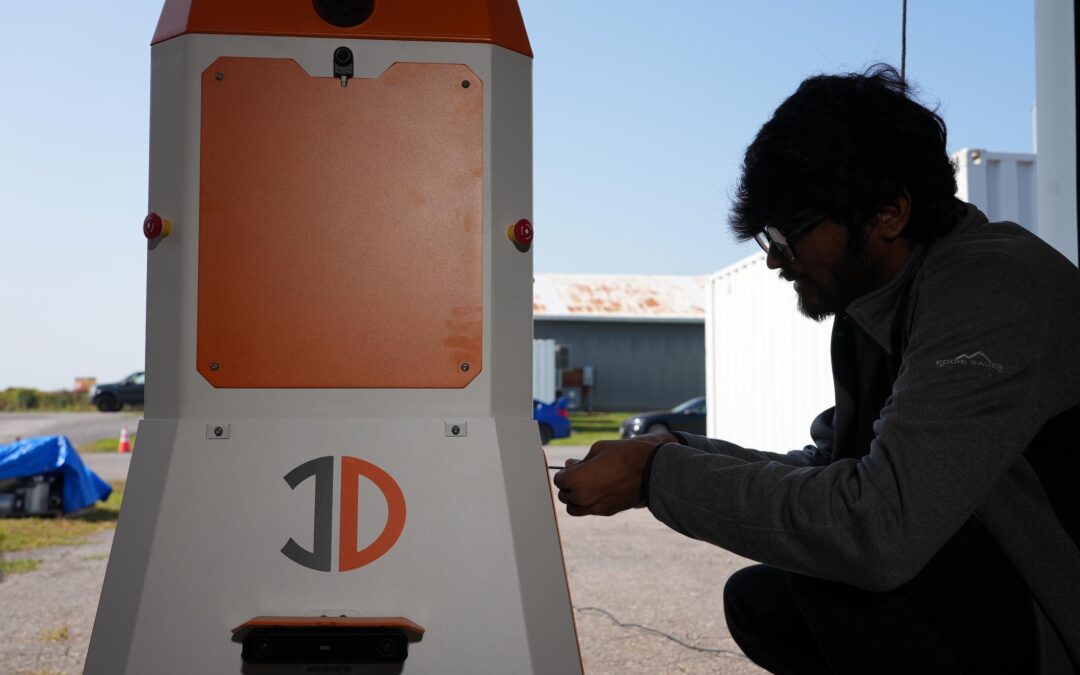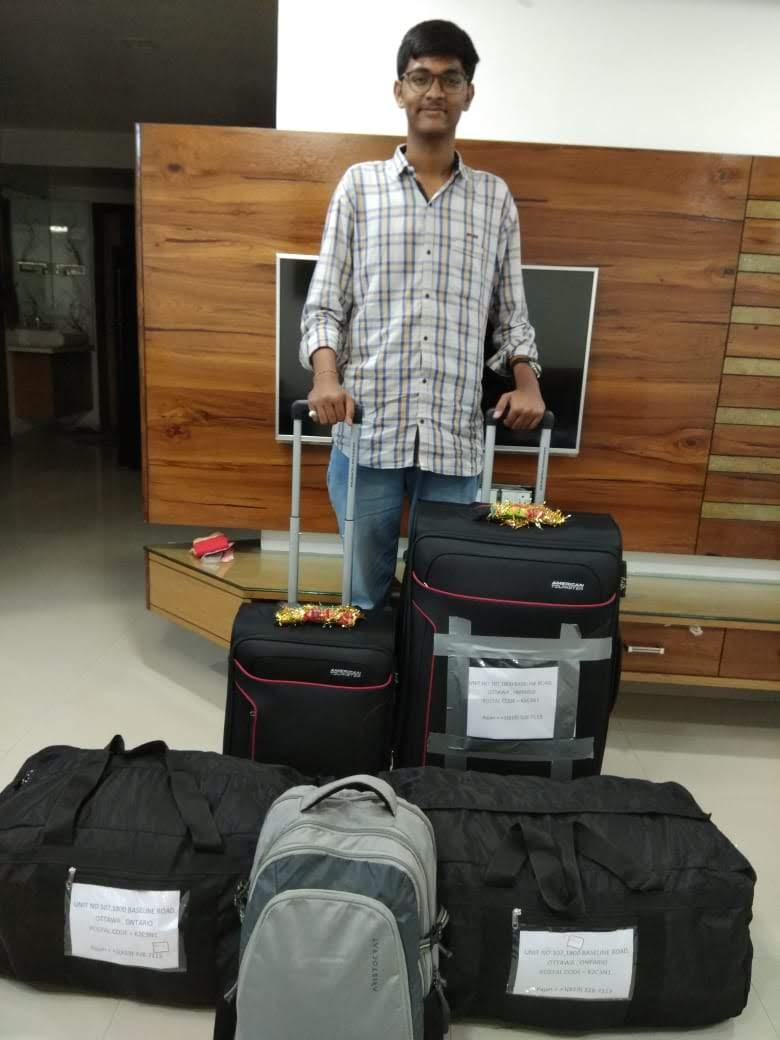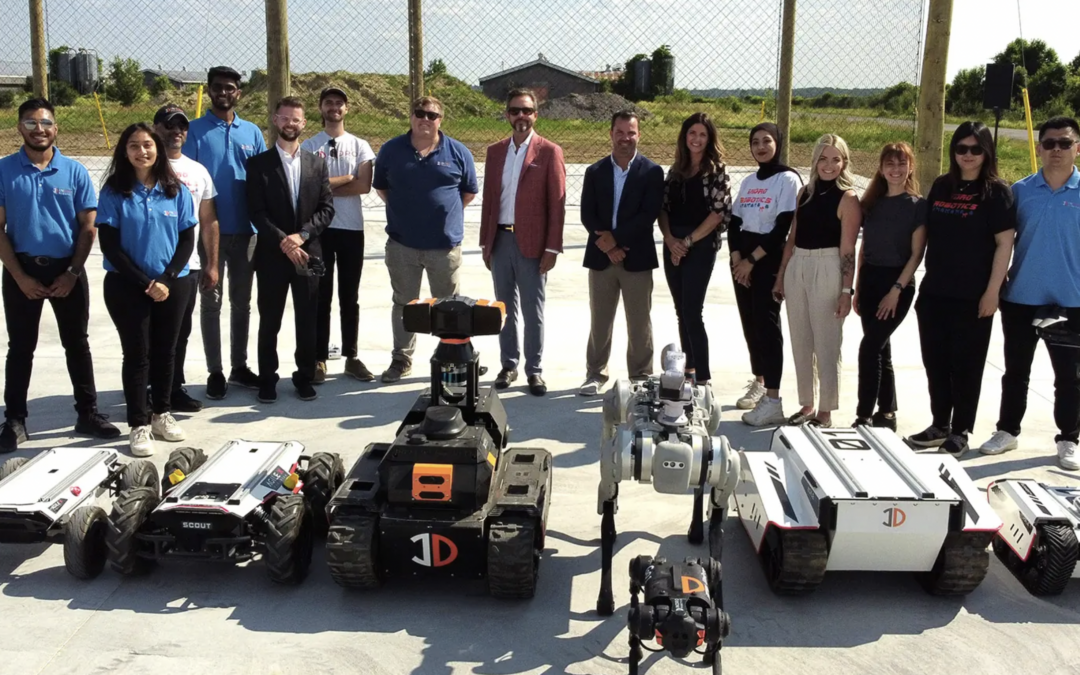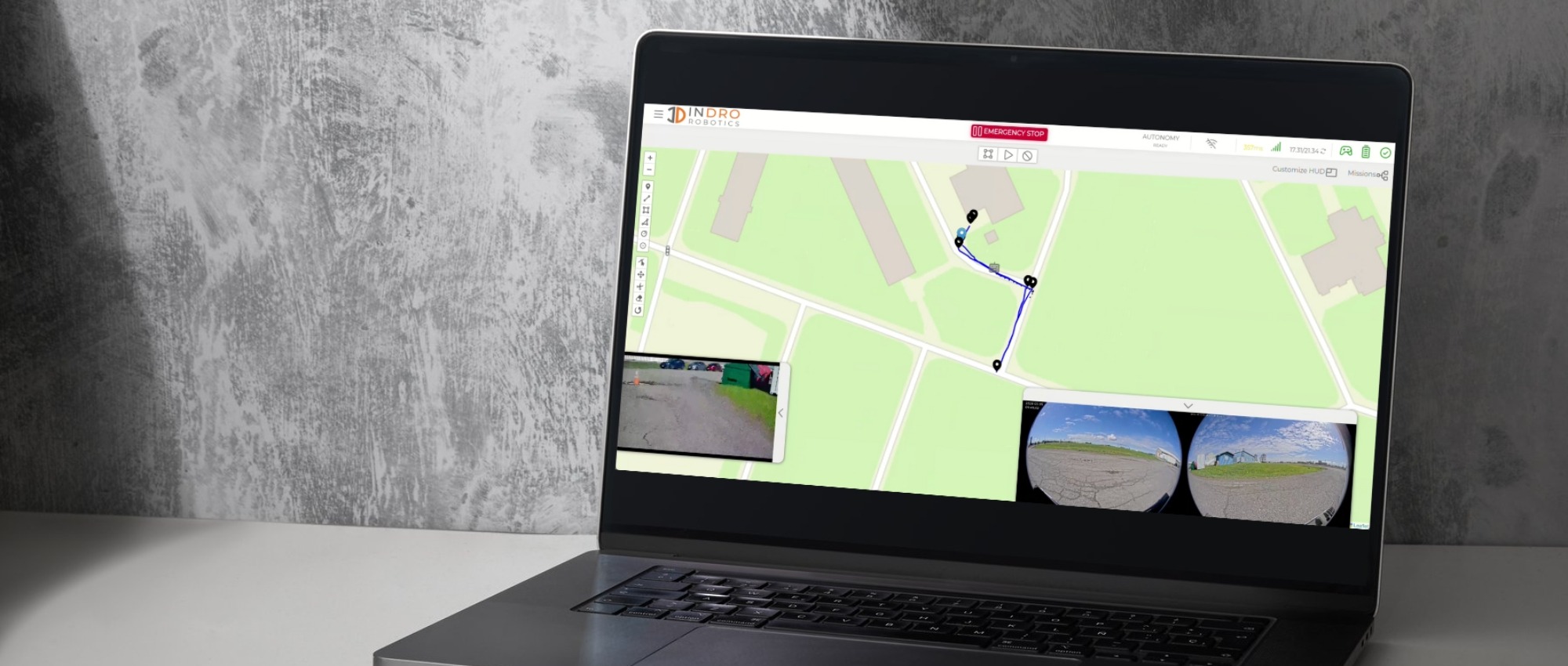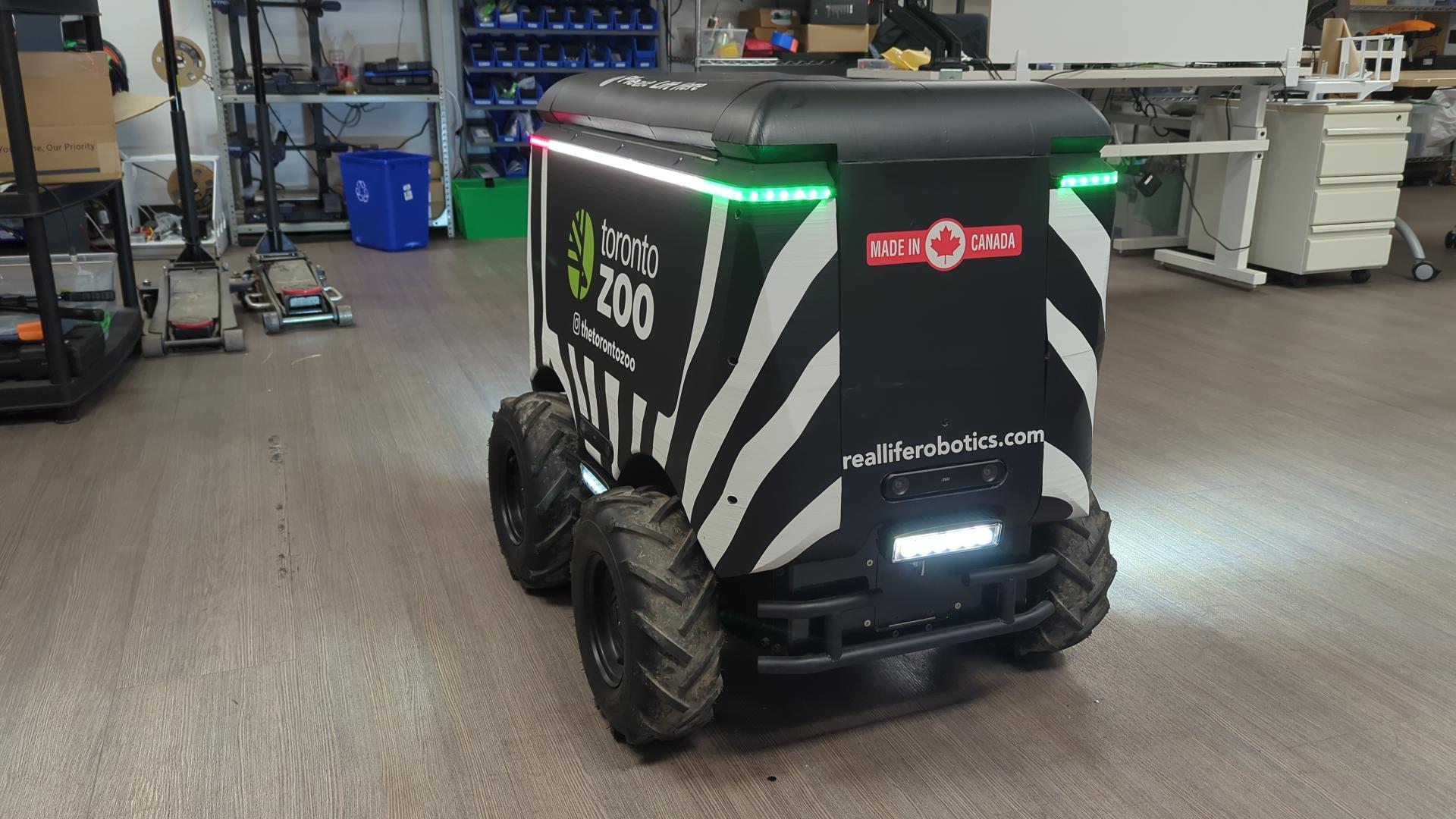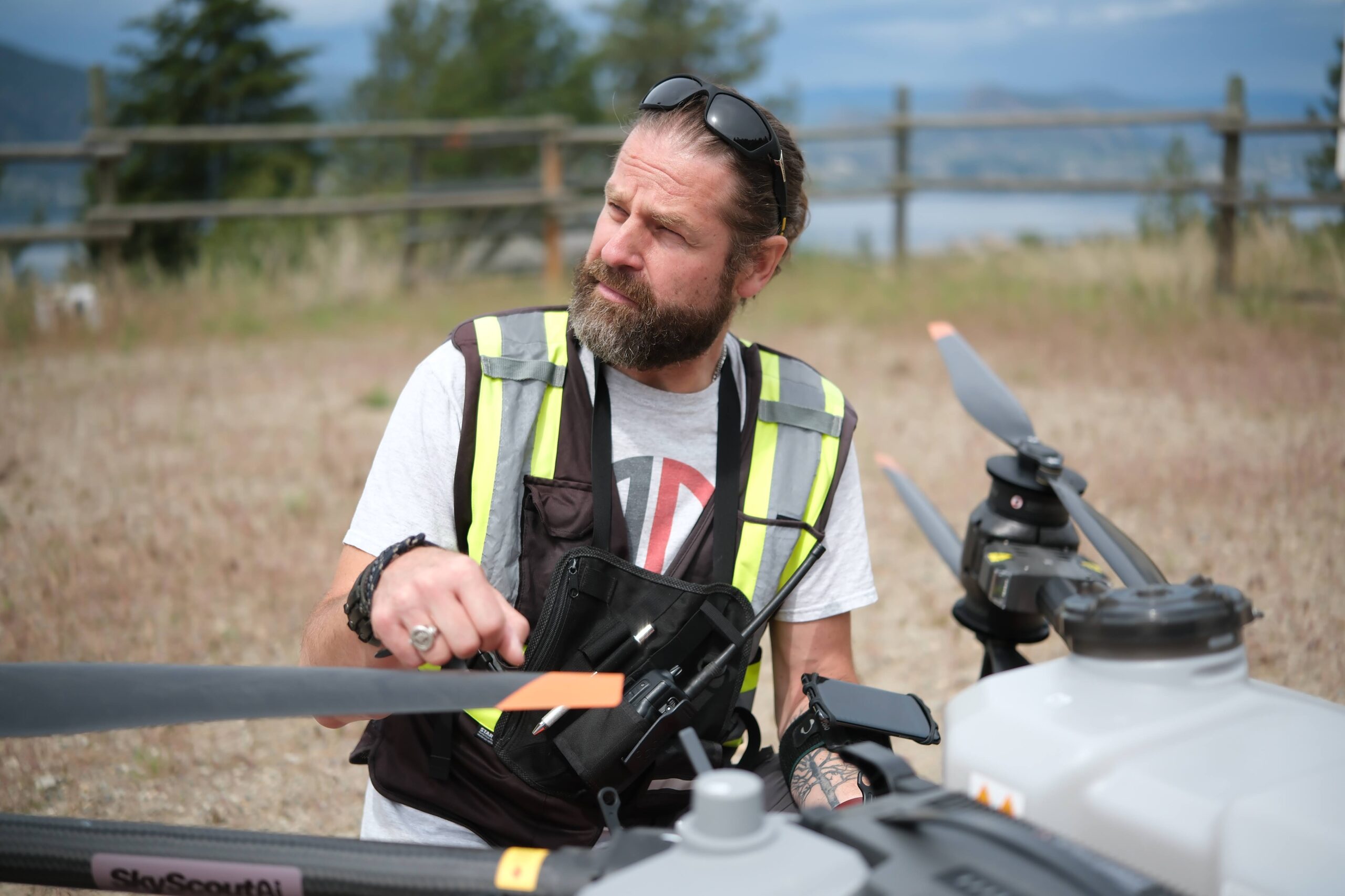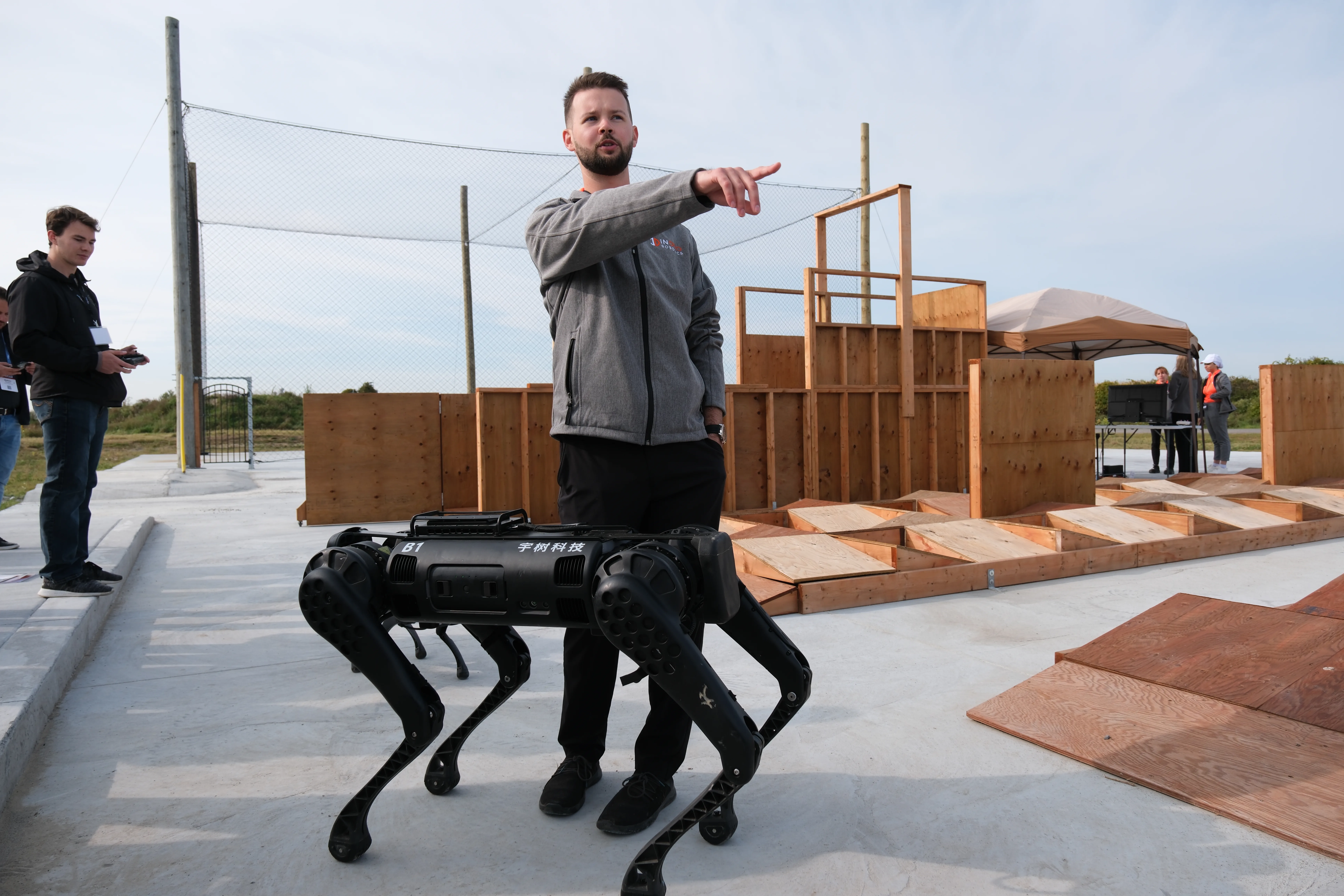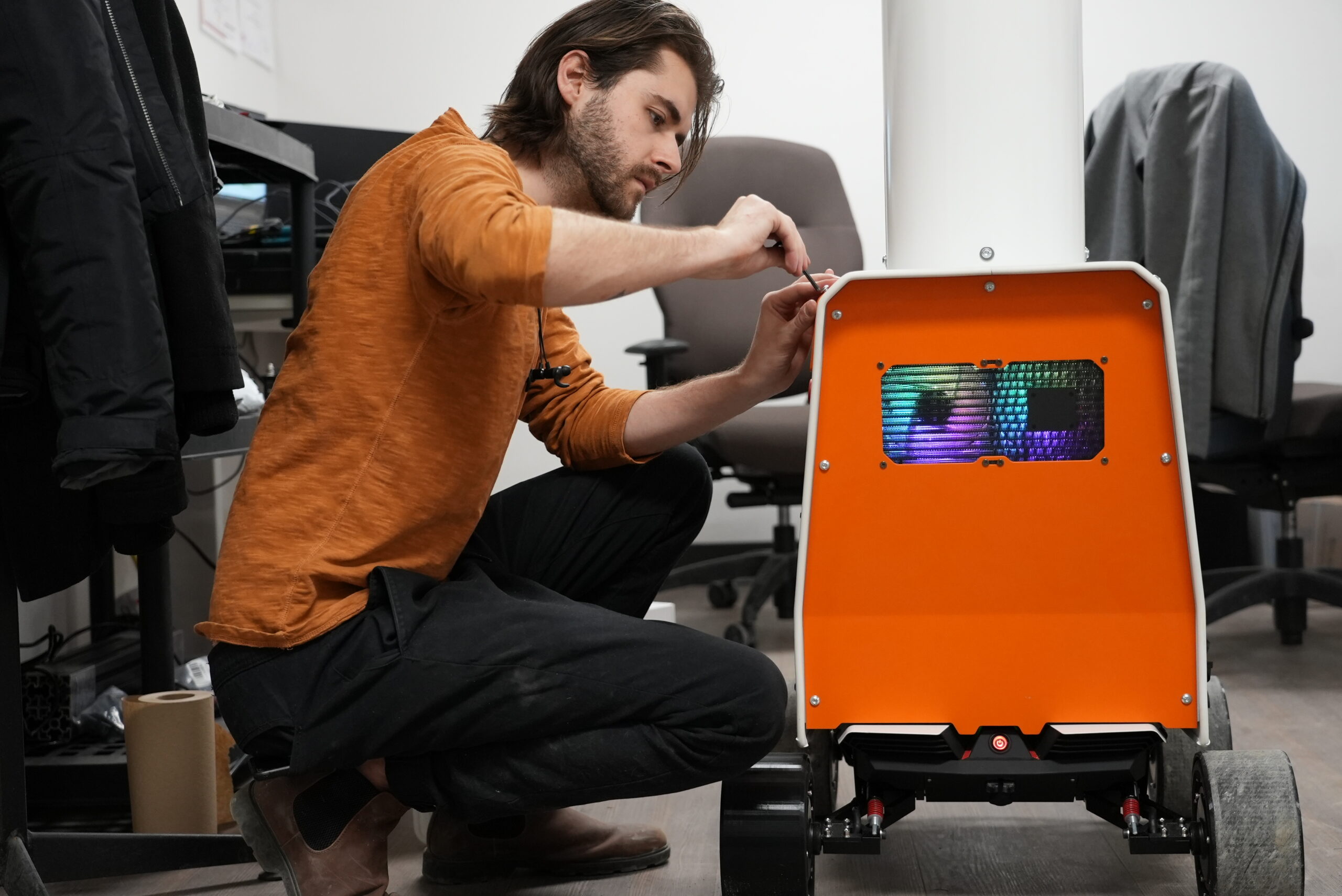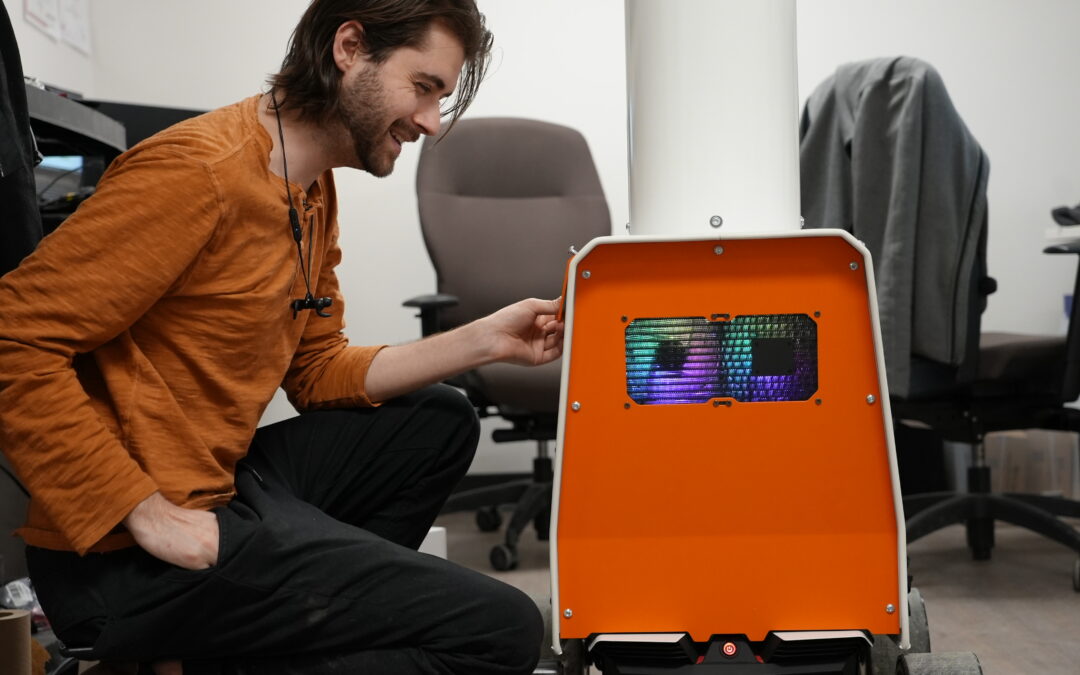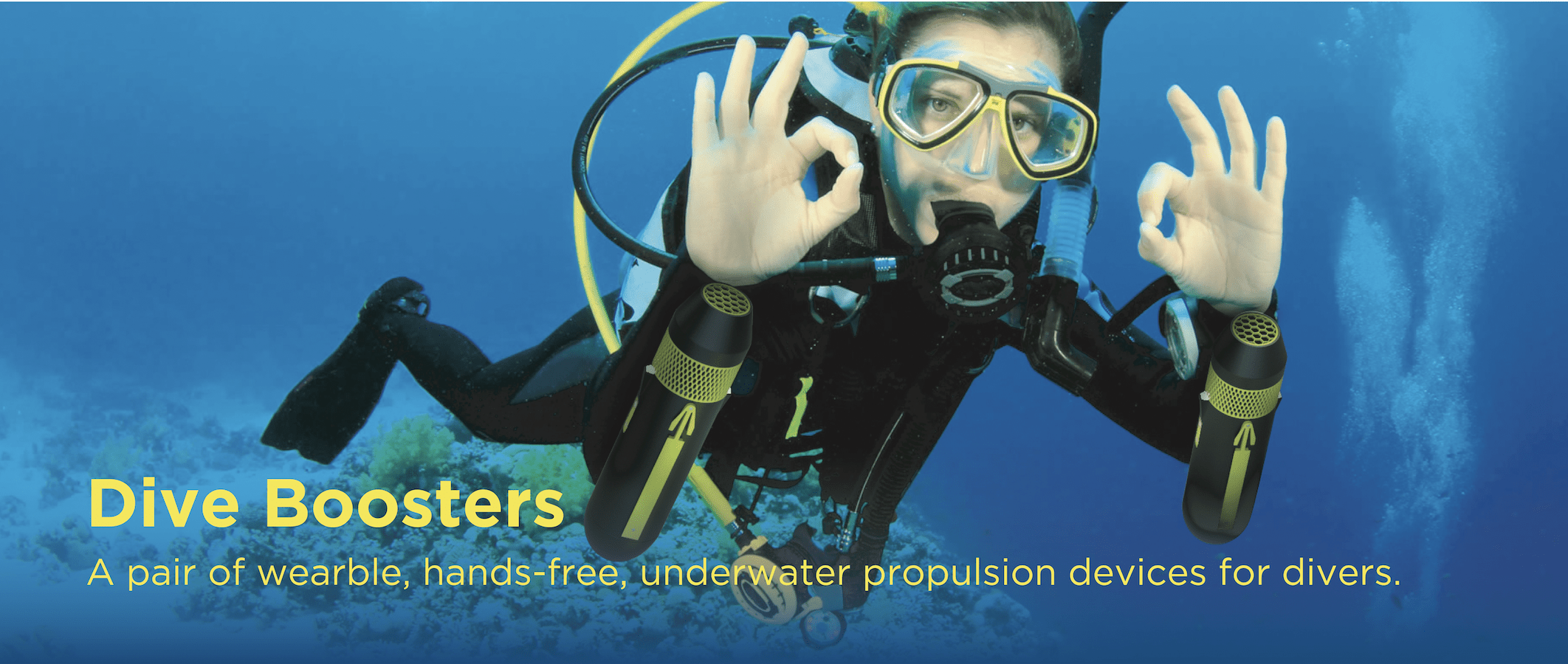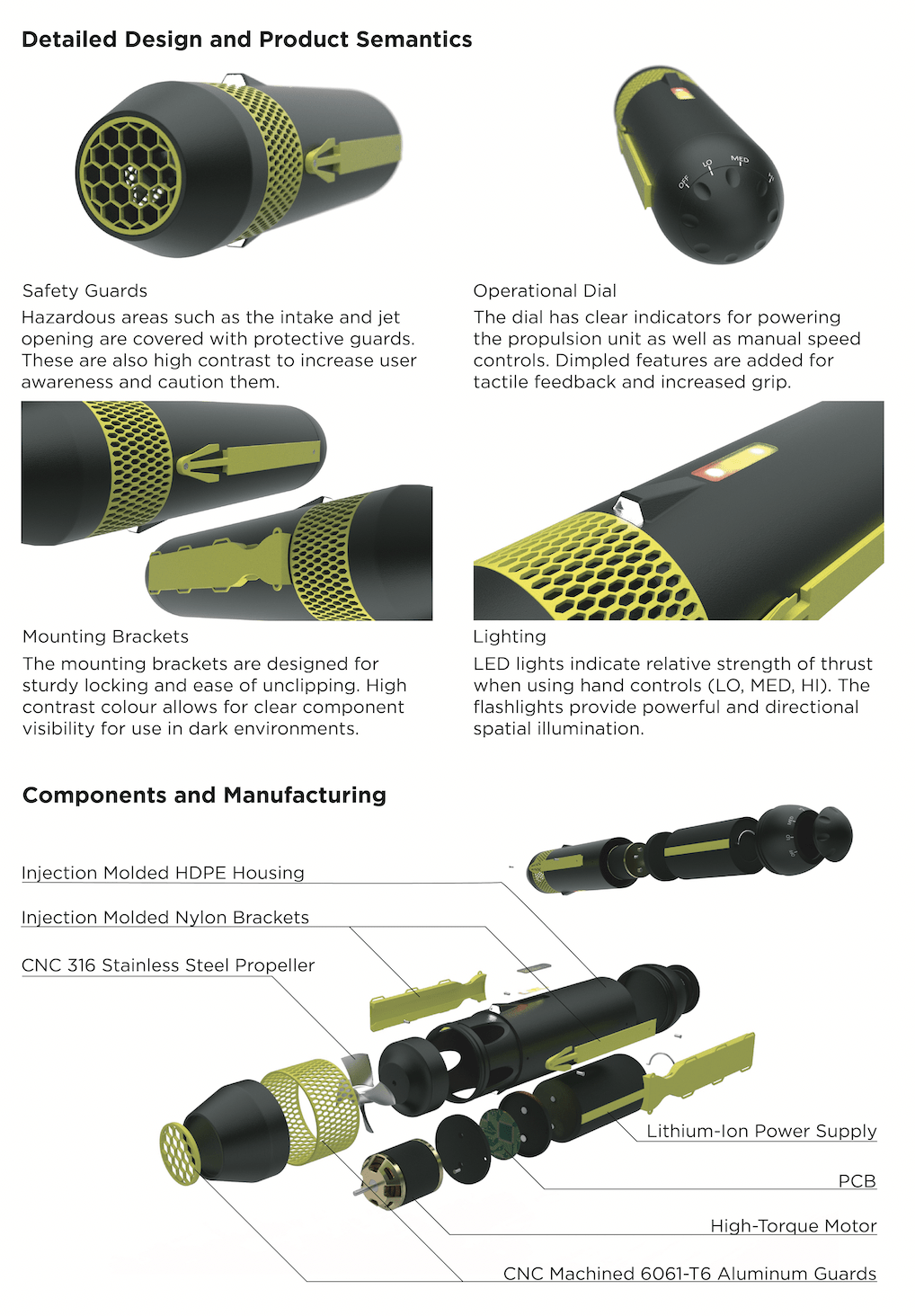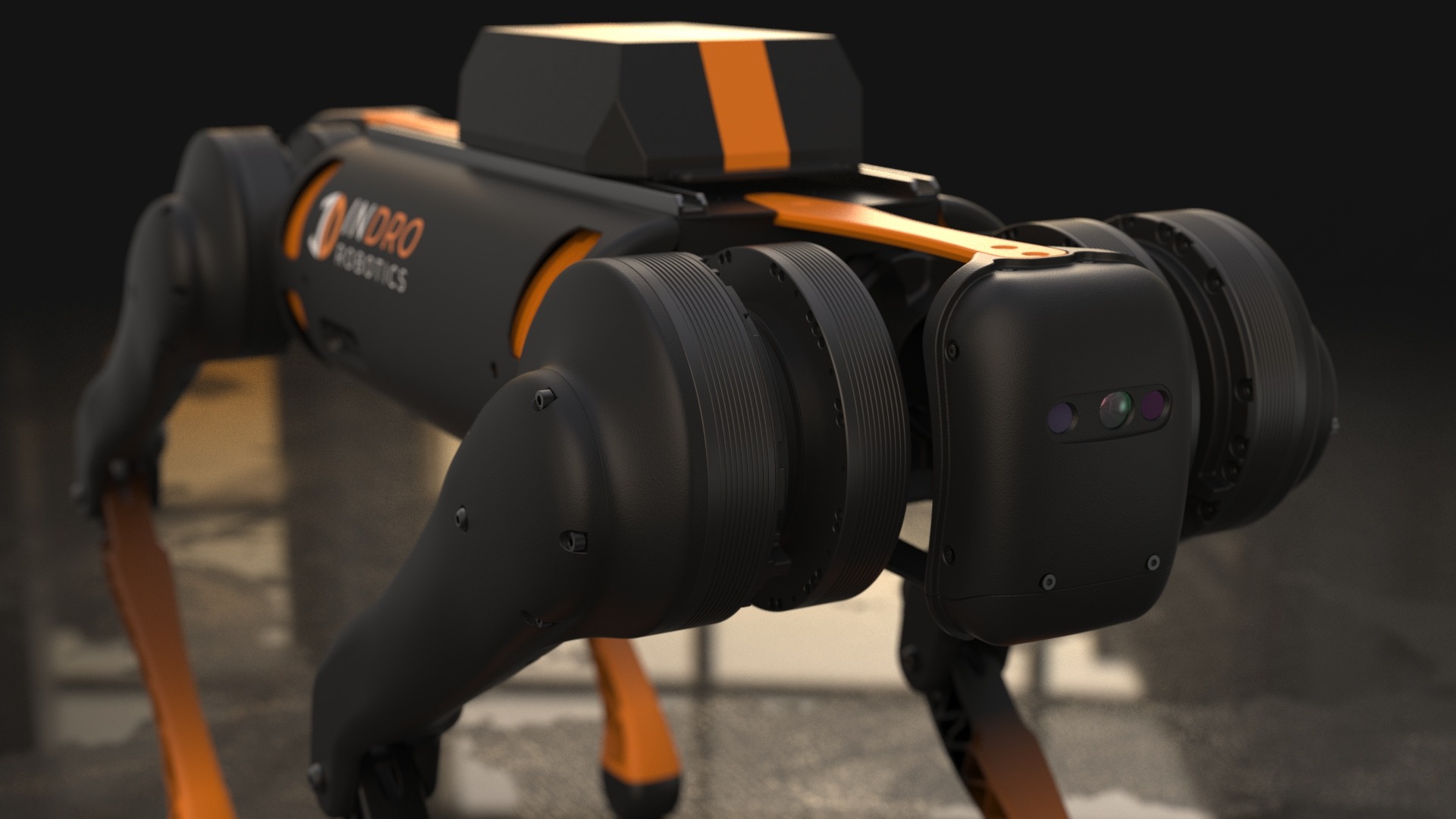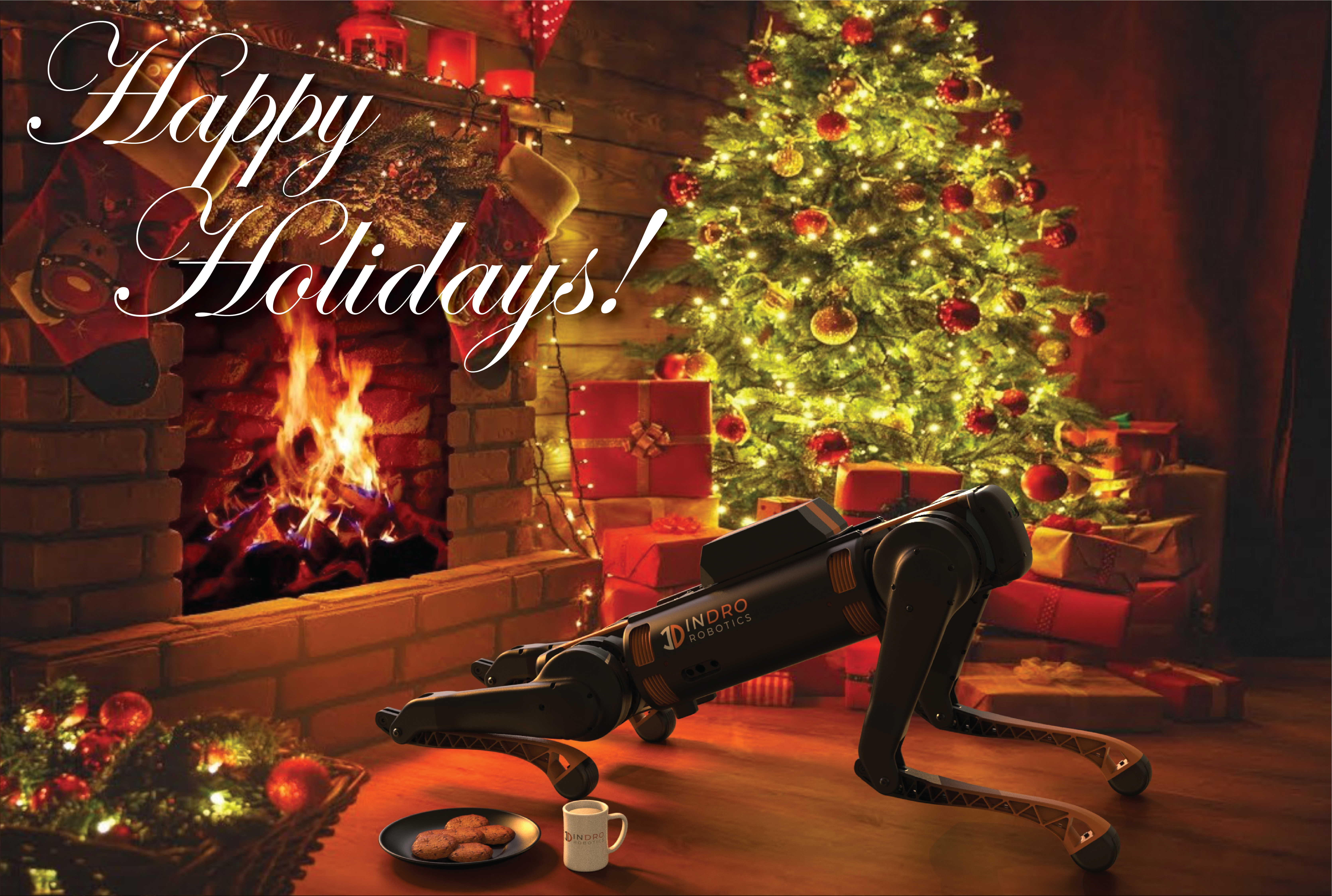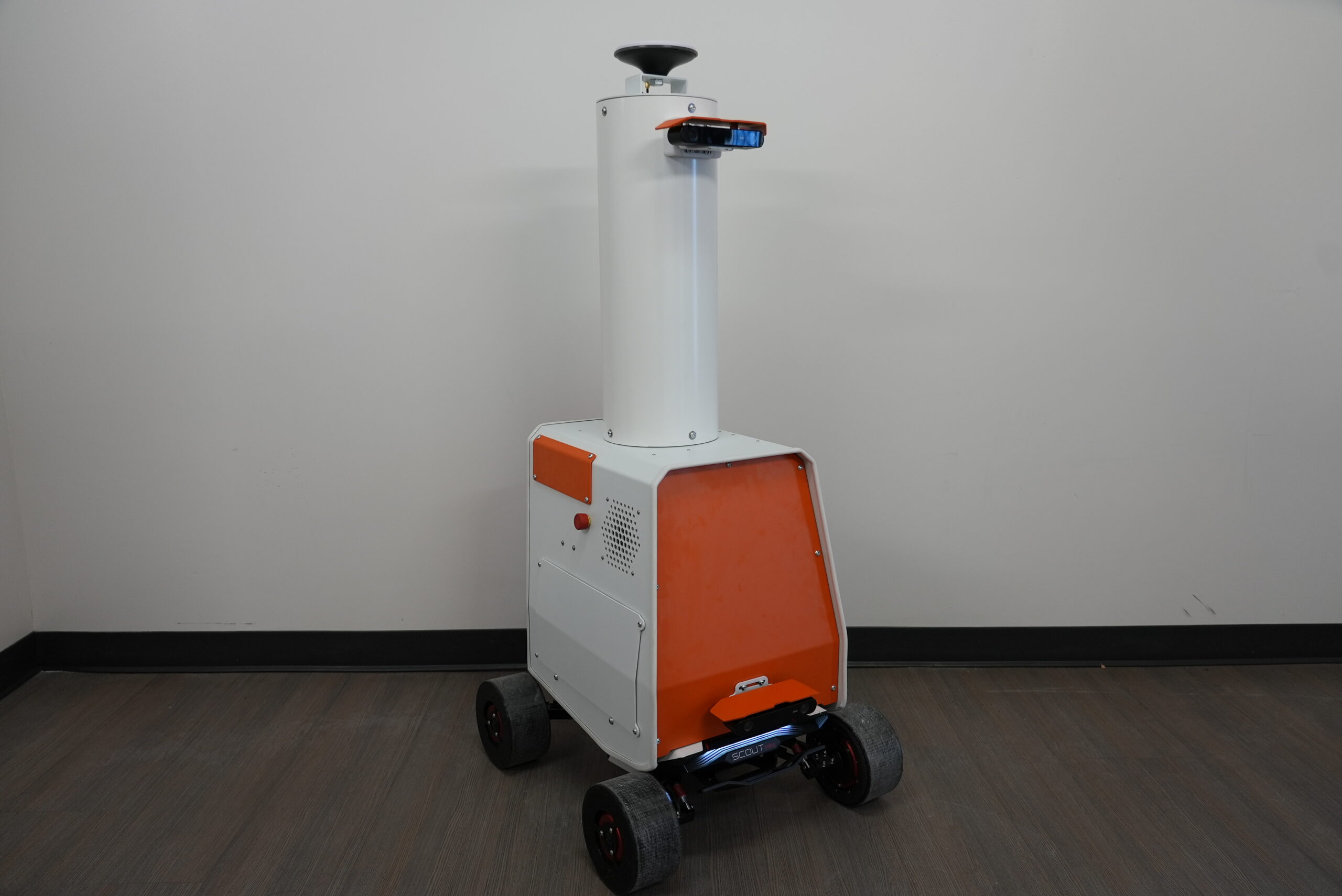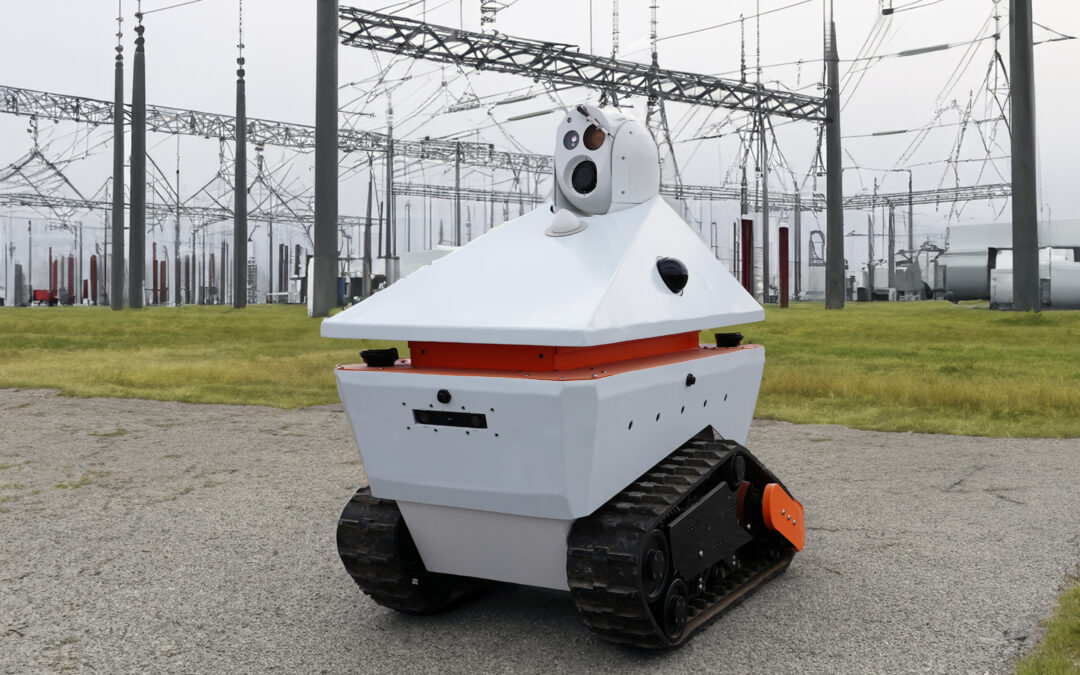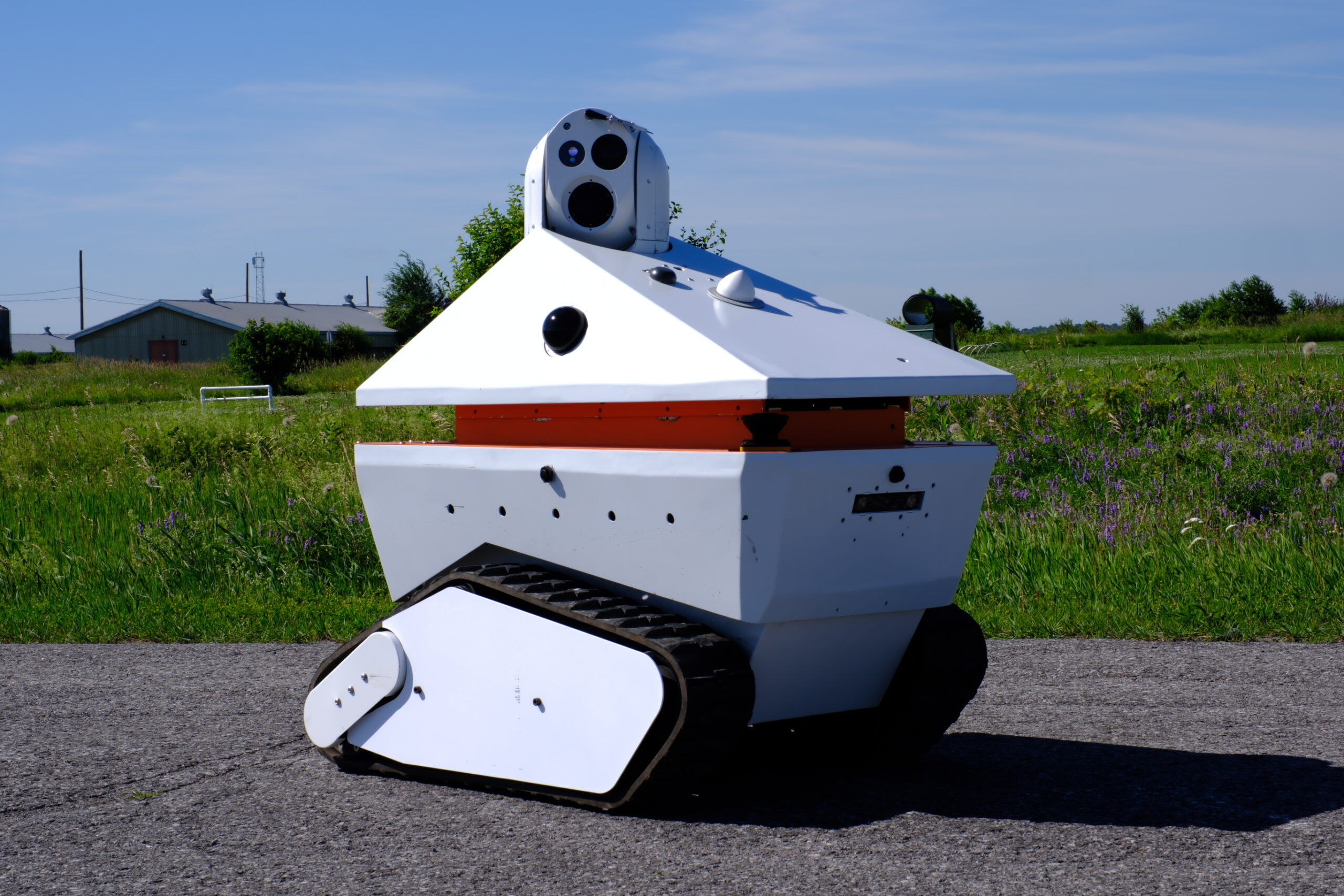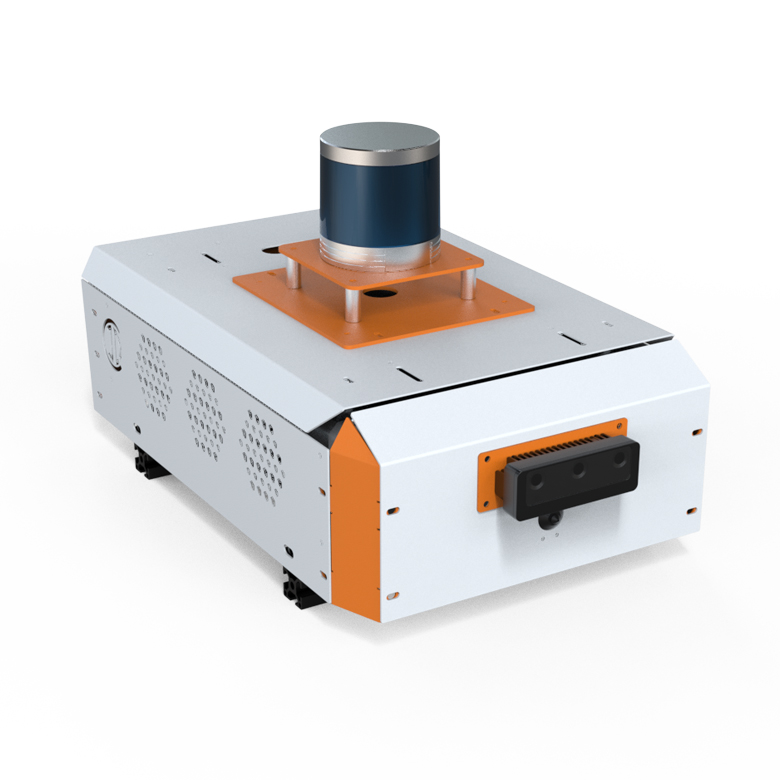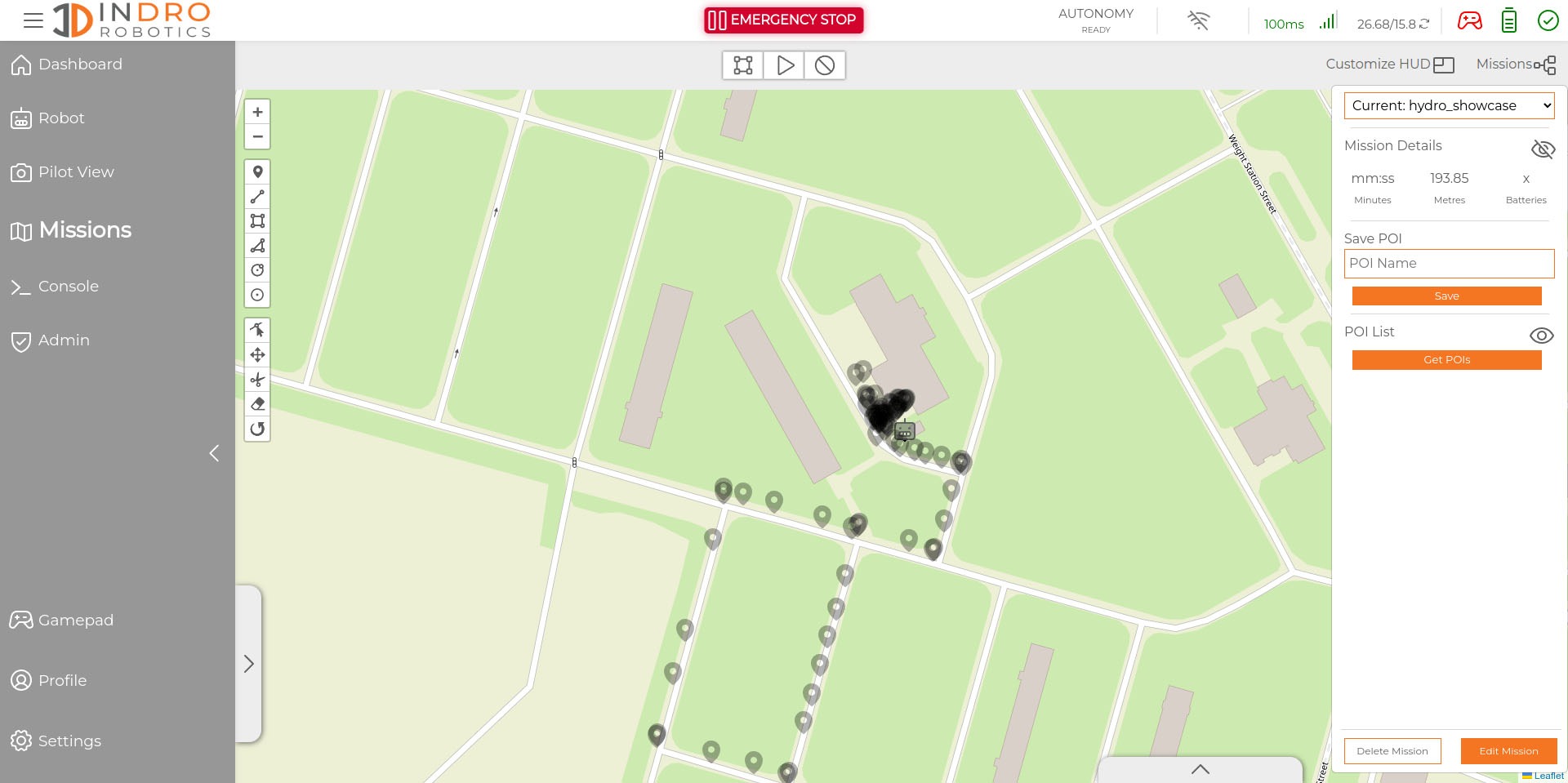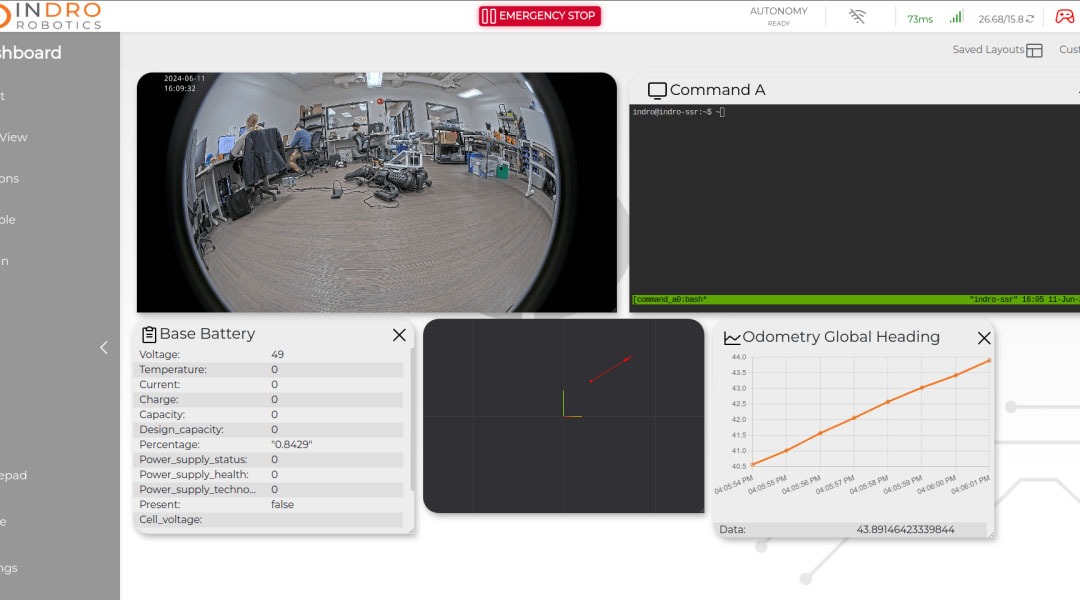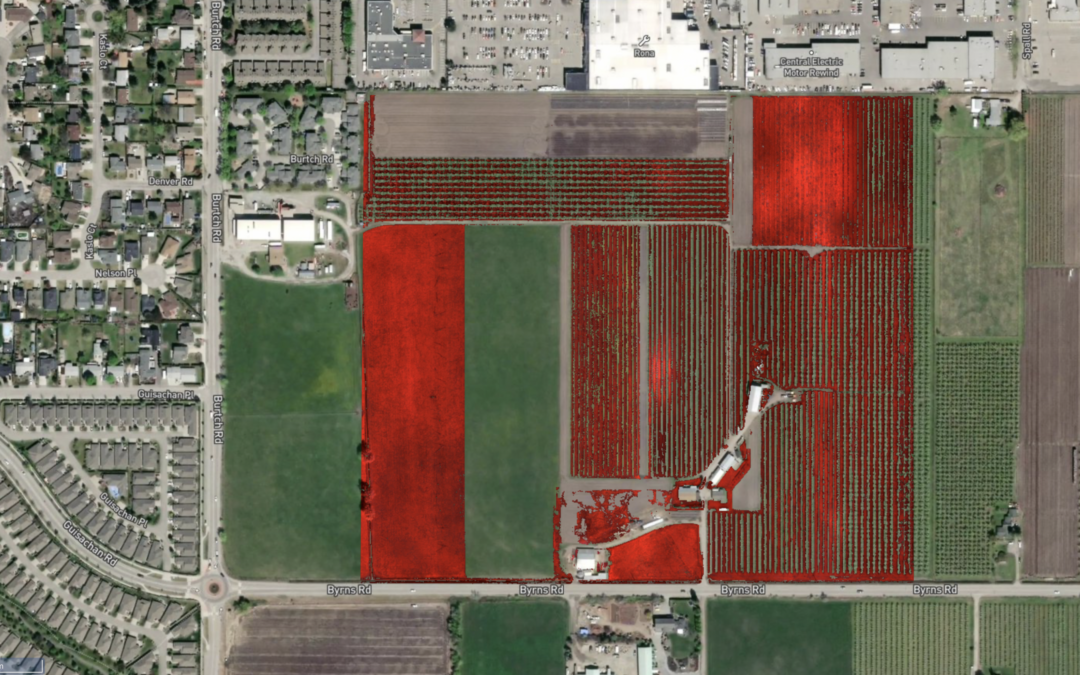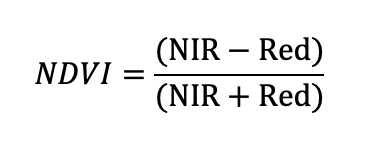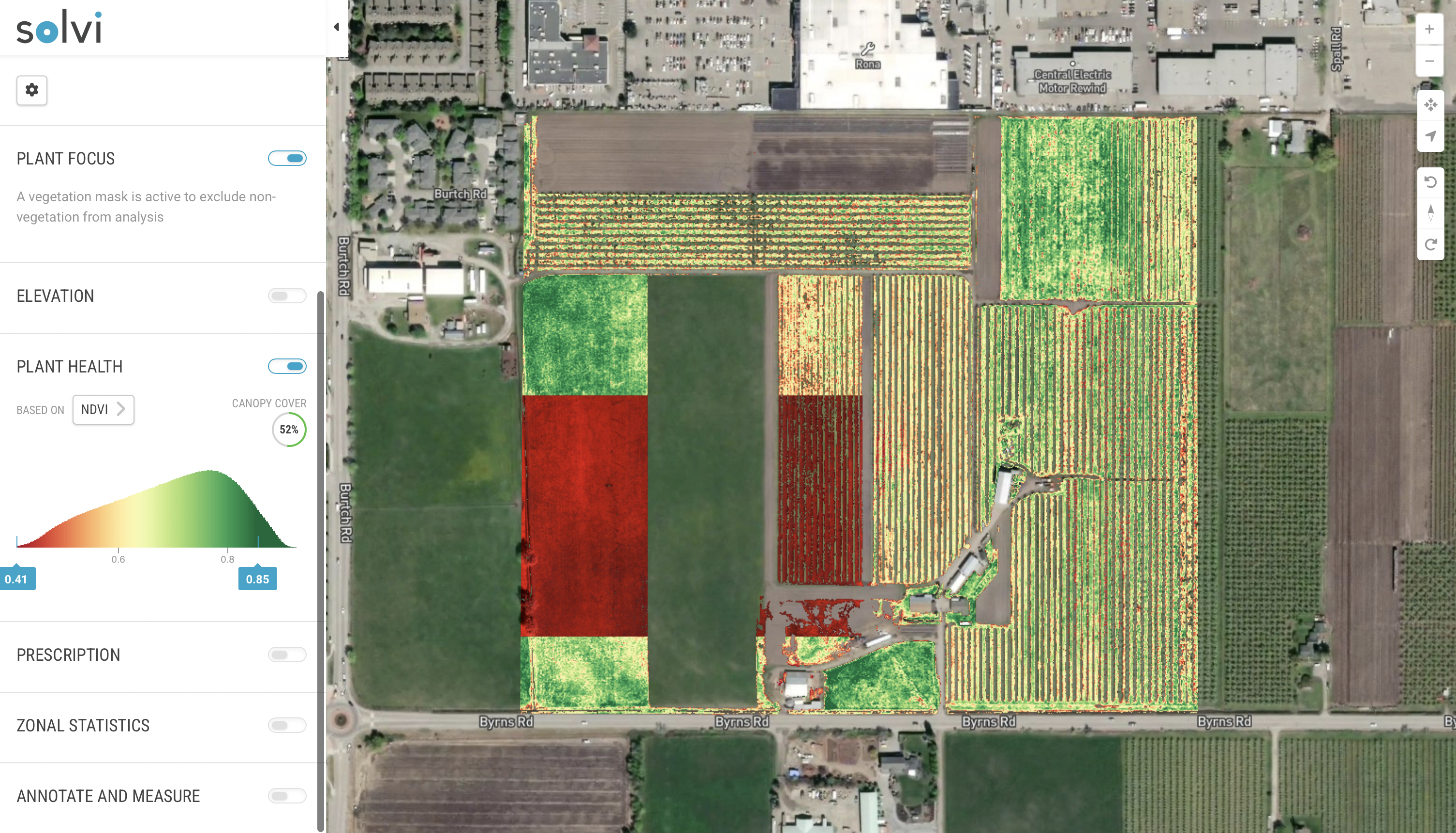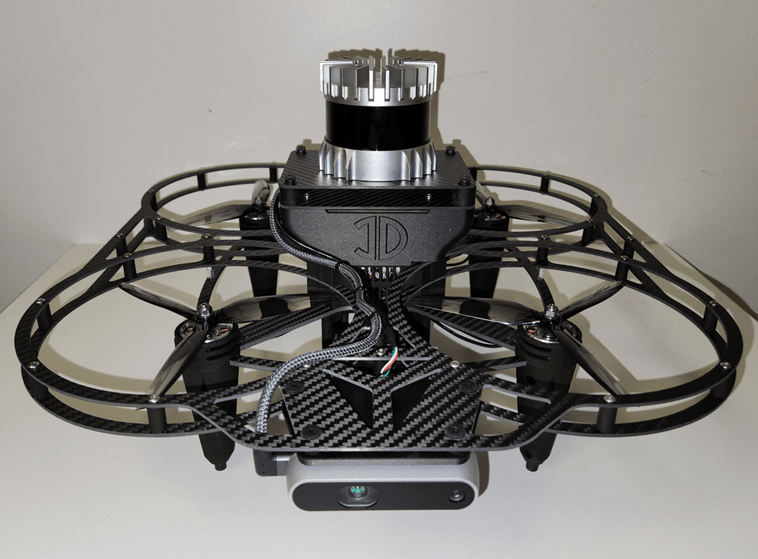
Tight budget? InDro Offers multiple R&D options
By Scott Simmie
Working on high-level R&D doesn’t necessarily mean a high-level budget.
It can, of course (and we can help you out there, as well).
But InDro is committed to putting powerful tools into the hands of researchers and developers without breaking the bank. We know many clients, particularly those in academia, often have ambitious plans but limited budgets. And we’re dedicated to providing those customers with multiple affordable options – along with the high-level support and documentation you’d expect might come only with more expensive options.
“That’s what makes it kind of fun, right? Trying to get clients the most value with the dollars available,” says Head of R&D Sales Luke Corbeth.
Often, academic researchers receive funding for specific projects from government or arms-length agencies. In Canada, many projects are partially funded by the forward-thinking Canada Foundation for Innovation. Founded in 1997 by the federal government, the CFI marked funding its 10,000th project in 2017 – and deserves a shout-out.
In the United States, academic clients are often funded by a similar agency, the National Science Foundation – which supports “grants, cooperative agreements and fellowships — that support research and education across science and engineering.”
More and more of these recipients come to InDro, looking for the biggest bang for their buck. Why InDro? Because we have options to suit any budget.
Below: The LIMO Pro, which we’ll hear about in a moment.
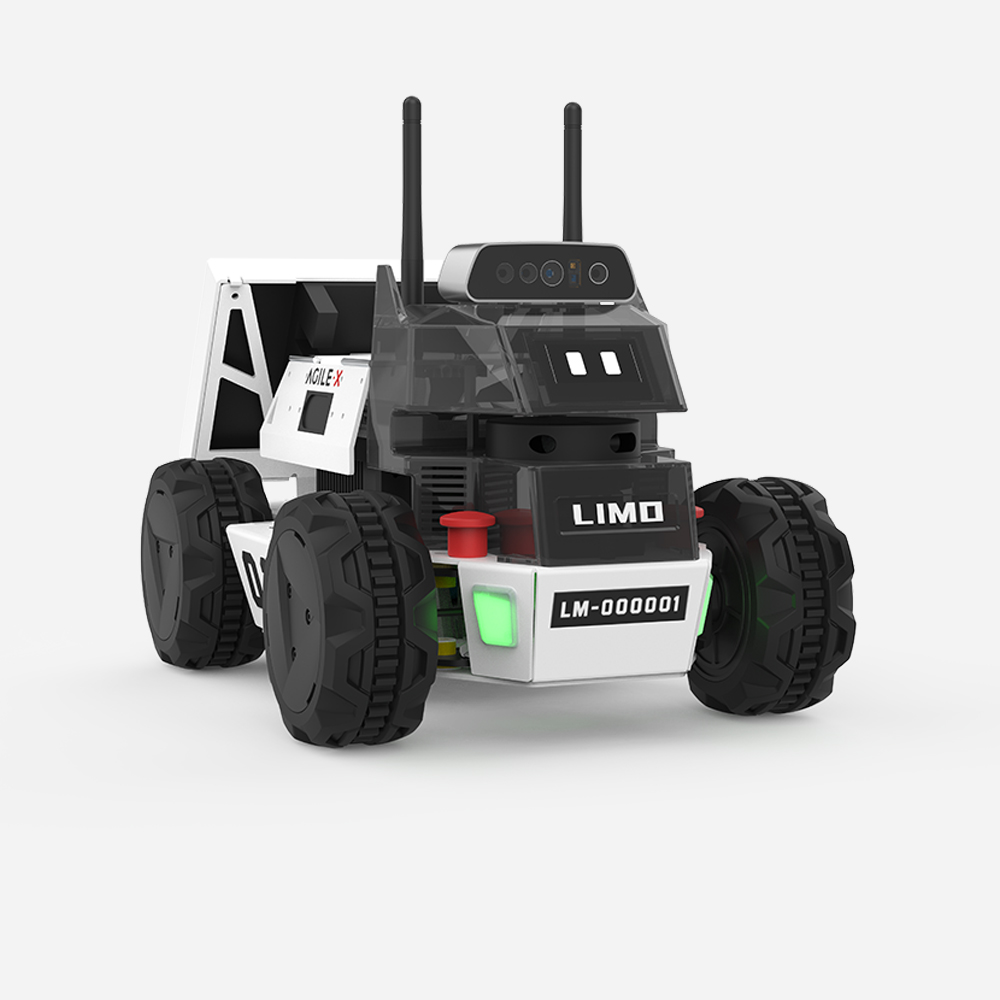
LIMO AND LIMO PRO
The small but powerful robot pictured above is currently at work in many labs across North America. Perfect for research on autonomy and machine vision/machine learning, these multi-modal and ROS-based machines feature four steering modes and punch well above their weight. Equipped with sensors and AI to understand their environment, the LIMO is capable of working on its own or in swarms. For institutions creating algorithms to help Smart Mobility become even smarter, the LIMO has proven to be a robust solution.
Easy to operate? Yes. But that ease in some ways belies the capabilities of LIMO. Boston University has purchased dozens of LIMOs through InDro, and is using them for multiple applications, including high-level, Multi-Agent Systems research.
“So typically what we expect within the next, let’s say five to 10 years, is a mixture of the smart connected autonomous vehicles and the regular vehicles that we typically refer to as Human Driven Vehicles or HDVs. So the idea is: How can we get these teams of autonomous agents to work together?” says says Christos Cassandras, Distinguished Professor of Engineering, Head of the Division of Systems Engineering, and Professor of Electrical and Computer Engineering at Boston University.
“Since I can’t use dozens of real vehicles, I would like to use dozens of small robots that can be thought of as these autonomous vehicles, (which can) talk to each other, cooperate,” he says. “But also sometimes they don’t really cooperate if some of them are the HDVs. So what we are doing in our Boston University Robotics Lab…is we deploy these LIMOs that we have acquired as teams of autonomous vehicles.”
In the video below, you’ll see LIMOs driving cooperatively, calculating in real-time the most efficient way to merge. That’s followed by an overview video from LIMO manufacturer AgileX.
VERSATILE
Though your project might not involve the complexities undertaken at Boston University, these robots are up to whatever task you can throw at them.
“Oftentimes researchers want to purchase multiple of the same hardware to do multi-robot systems research, or the platform is going to be used for teaching and training,” says Corbeth.
For those requiring more advanced sensors and AI, there’s the LIMO Pro. We outline its capabilities here on our own website:
“Powered by NVIDIA Orin Nano, EAI T-mini Pro LiDAR, and Orbbec Dabai depth camera, the LIMO Pro robot delivers unparalleled environmental awareness for autonomous navigation, obstacle avoidance, and visual recognition. With ROS 1 Noetic and ROS 2 Foxy compatibility, seamless software integration is at your fingertips. Enjoy an extended 2.5-hour battery life for uninterrupted research and experimentation. The ultimate platform for students, researchers, and enthusiasts, LIMO Pro offers a transformative learning experience with state-of-the-art sensors and software.”
There are actually two versions of the LIMO Pro: The ROS and ROS2 models. The first operates on ROS1 Noetic and ROS2 Foxy and features the Jetson Orin Nano 8G for onboard compute. The ROS2 model incorporates an Intel NUC i7 8G for processing, and runs ROS2 Humble. Because all versions of LIMO are multi-modal (ie Omni Wheel, Four-Wheel Differential steering, Ackermann steering and Tracked steering), they allow researchers to test algorithms and responses in all of these modes – providing learnings that could be applied to larger platforms.
“So you can basically simulate any larger robot’s locomotion with just a small compact package,” says Corbeth.
LIMO Pro and the original LIMO are also affordable, priced at $3200 USD and $2500 USD respectively.
We should also add here that there’s a cobot version of LIMO Pro available, which has a manipulator arm on top.
“This allows teams to learn how to do the basics of mobile manipulation and then, should you want to expand on that with greater capabilities, scale up. But all the basics are there,” he adds. The manipulator arm version sells for about $4500 US.
DOCUMENTATION
It’s one thing to purchase even a small robot like LIMO. It’s quite another to get up and running in the way your R&D requires. While LIMO and LIMO Pro can be operated straight out of the box, InDro is aware users might need some help along the way with specific tasks or coding. For example, how do you put a model of the LIMO into Gazebo for simulated missions? No problem – InDro offers comprehensive documentation for all the products we sell.
Plus, our documentation is constantly updated as researchers hit us up with questions and our engineering team finds the answers.
“Basically this is a compilation of knowledge-based pages that we’ve accumulated over the years at this point, answering pretty much any question clients have ever approached us with,” says Corbeth.
“This extends from software to our physical products as well. The LIMO documentation is really fleshed out – we cover everything from how to use it in a gazebo simulation to networking, how to do teleoperation, SLAM, obstacle detection, obstacle avoidance. We even have a series of quizzes that people can use to test their knowledge and improve their understanding of how to effectively use this technology.”
All LIMO clients have on-demand and free access to this documentation. Here’s a screen grab that provides an overview of some of the topics covered:
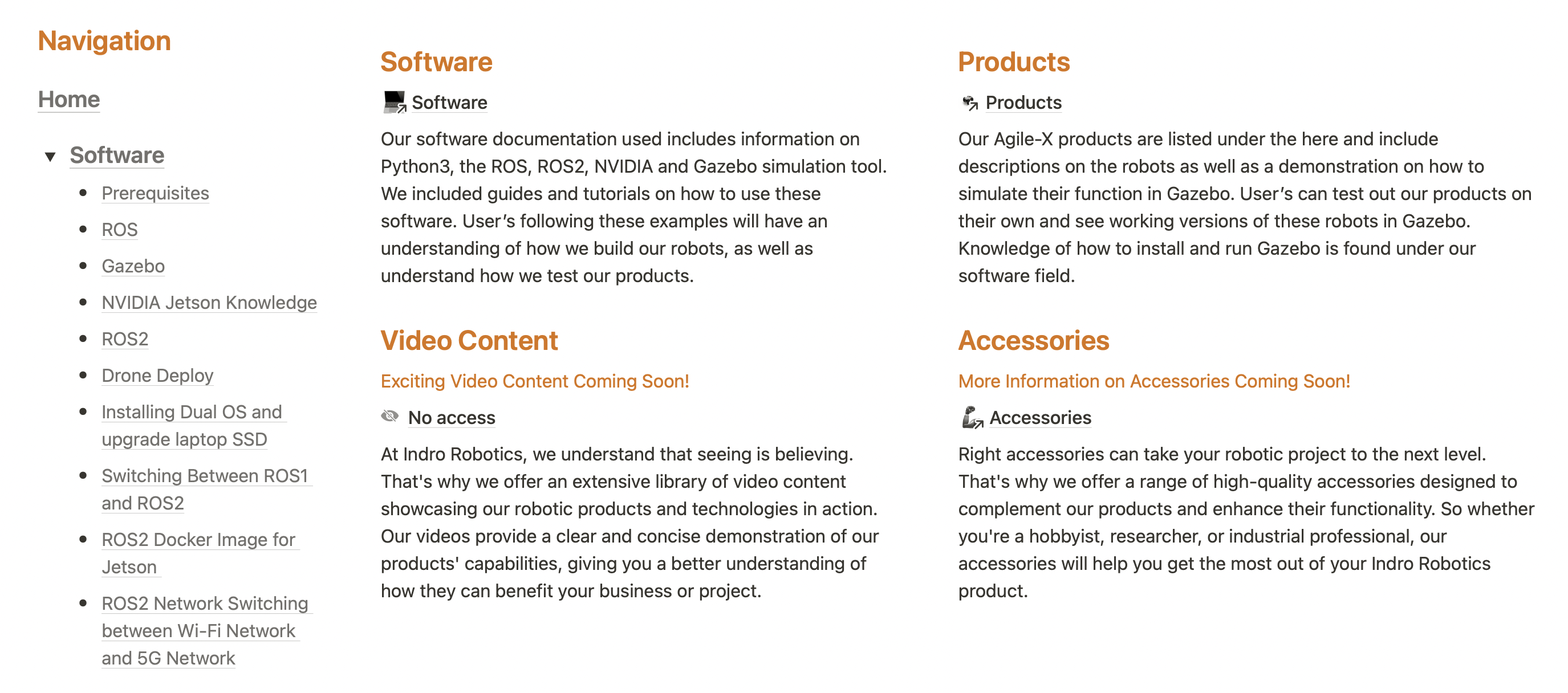
QUADRUPEDS AND MORE
Of course, different research requires different platforms. Increasingly, we’re seeing demand for quadrupeds – which are capable of handling more demanding terrain (including stairs). And here, too, we have solutions.
“When it comes to quadrupeds, they’ve historically had two downsides: They were closed-source – so unavailable for development – and they were horrifically expensive,” explains Corbeth.
That has changed. Unitree Robotics has set a new bar for affordable and reliable open-source quadrupeds ideal for research and development and, if your budget’s a little higher, real-world deployment for monitoring, surveillance, search and rescue, etc.
The company began with a very smart engineering student, Wang Xinxing. His vision was to build a quadruped using powerful but relatively inexpensive brushless motors. His university project in 2014-2015 focussed on building what he termed XDog (where “X” means mystery). He was successful and just kept on going – founding Unitree. To look at how incredibly quickly this company has progressed, it’s worth comparing two videos. The first is back from Wang’s university days (from a YouTube channel he still maintains). The second is the GO2, featuring the new wheeled option.
It’s quite the contrast, and Unitree products are constantly being upgraded.
AFFORDABLE
Unitree does produce some very high-end models for industrial purposes (and we’re happy to help you with those), but the emphasis in this piece is on affordable models suitable for R&D. And here, there are some options.
The GO2 EDU has been designed for R&D work.
“The whole point of the GO2 EDU is to reduce barriers to entry, both in terms of price and development potential. Obviously they’ve gone through multiple iterations of the system now and have refined it – like, really refined it,” says Corbeth.
“The core locomotion is really good, the onboard compute is extremely powerful, it has a number of pre-integrated sensors and there’s super elaborate documentation. Basically, it’s the penultimate entry point for quadruped development and there’s more than one model.”
Is it cheap? Well, if you look at the Unitree website you’ll see one model touted at $1900 USD. But that is not the dog we’re talking about; that model is built pretty much solely for entertainment and not suitable for R&D. But you don’t have to take a great leap from there to get into the quadrupeds researchers are interested in. There are three models that have been finding their way from InDro to research institutes; all come with LiDAR and excellent compute.
- GO2 EDU
- GO2 EDU Plus (improved compute)
- GO2 EDU Plus Hesai XT16 (additional LiDAR)
- GO2 W Plus (wheeled version)
“The educational versions are the ones our clients are most interested in because those are the ones that have improved hardware and the ability to be programmed,” explains Corbeth. “They also come with a really intuitive remote that allows you to see what the robot is seeing through its various sensors.”
Prices for the GO2 EDU line start at $13,900 USD and come with the full support of InDro and its extensive online documentation. All of these quadrupeds can be customised with accessories, including wireless charging, a robotic manipulator arm and even a small Point-Tilt-Zoom camera.
Researchers have done a lot of work with their own autonomy stacks and machine learning on the GO2 EDU line. Some have even adapted the quadruped as a service dog, capable assisting those with vision impairments or other disabilities. With the right software, these quadrupeds are even capable of identifying and pushing accessibility buttons on doors, so that’s both cool and useful.
NOT JUST R&D
Though this story focusses on budget solutions, we’d be remiss if we didn’t point out that Unitree has an entire line of quadrupeds (and now, two humanoid models), suitable for higher budgets and real-world deployment. The GO2 comes in an ENT, or Enterprise version, which can be outfitted with gas sensors, emergency services lighting and other features suitable for Search and Rescue, surveillance and monitoring, etc. And if you have a factory or industrial setting requiring repeatable autonomous monitoring, you can get into products like the B2, a large and powerful robot so robust it’s can carry huge loads and is even capable of walking underwater.
These are a significant leap in cost and abilities from the GO2 EDU line, but are still highly competitive when compared with other products on the market. The difference is that products like the B2 have been purpose-built for the industrial sector and deployment in highly demanding conditions.
Here’s a look at the B2 (it looks a lot bigger in real life).
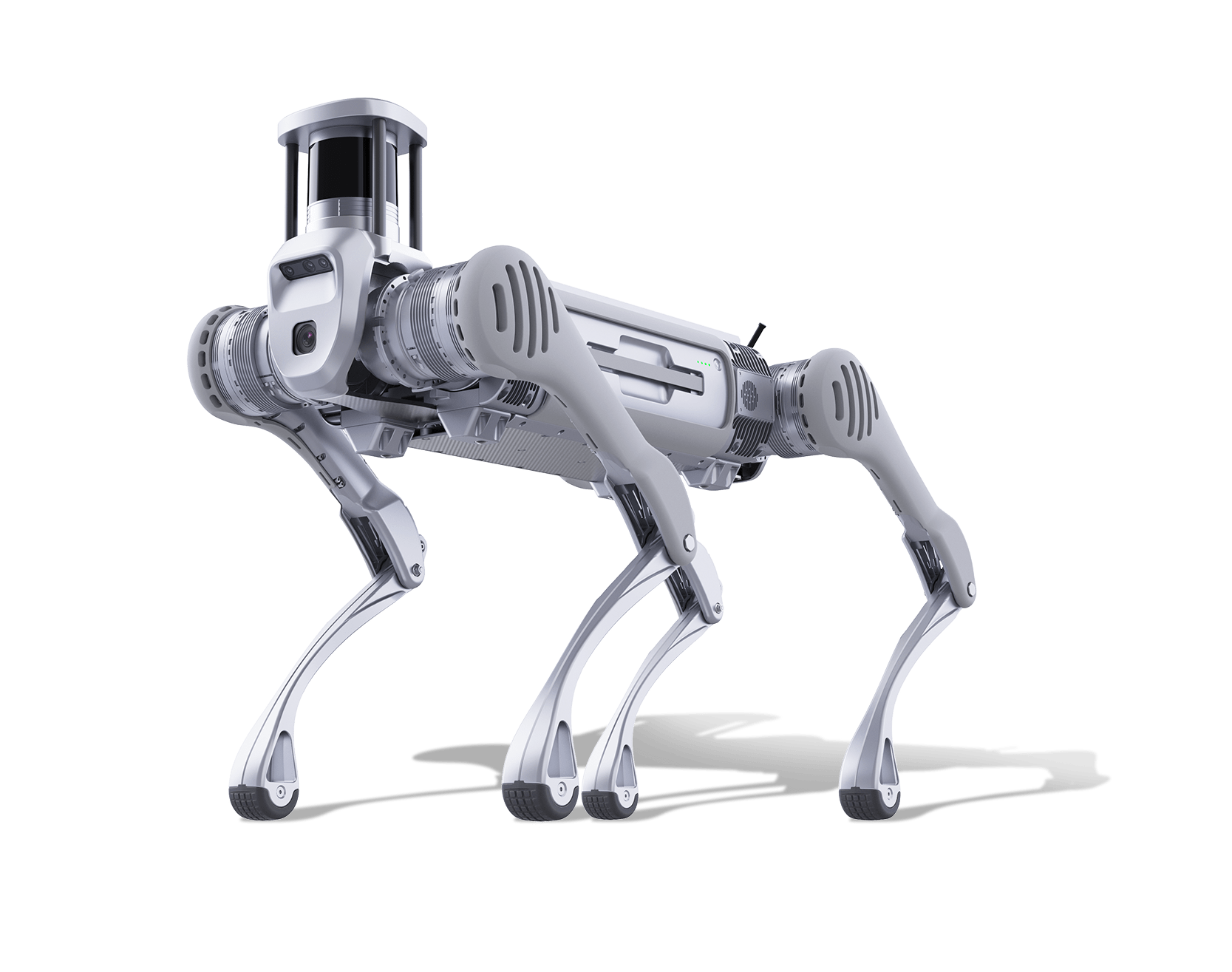
AND FINALLY, OUR ROS-BASED DRONE
Before expanding into the ground robotics space, InDro built itself on its advanced R&D work and specialized service provision with drones. That works still continues, and we offer a wide variety of products for Enterprise use, including search and rescue, medical deliveries and more. But we’re particularly excited about a new drone we’ve developed for R&D clients seeking an affordable, open-source drone for development.
“The concept behind the R&D drone is we went to the market and we tried to find the best available open source ROS-based drone. And we couldn’t find one.” says Corbeth. “So essentially what we’ve done is find a way to build one ourselves.”
For R&D researchers, access to an affordable and programmable flying platform is a big deal – especially since the programming protocol is the same as working with a ROS-based ground robot.
“A drone is essentially a flying robot in terms of the way developers interact with it,” he says. “The primary difference is that instead of wheels, tracks or legs, you’re using motors and propellers.”
And, of course, sensors depending on client needs. Our R&D drone comes with a depth perception camera for obstacle avoidance and unfamiliar environments, but can be outfitted with anything a client needs. One of our clients is using this drone for research and mapping in caves, so we outfitted that model with a mapping LiDAR.
“If you start to consider more complicated applications like landing on a moving vehicle or landing on a sea vehicle, where the the home point is constantly changing, that’s not something you can do with a DJI drone – but is certainly something you could do with this,” says Corbeth. “Introducing any amount of machine vision or AI on the drone is something you can do when it’s open source, but not possible when it’s closed source.”
In another example, we have one academic client using this drone for research in combination with a swarm of LIMOs.
“One Canadian university is actually teaming together the drones with LIMOs. They’ve purchased a number of LIMOs, they’ve purchased a number of drones, and they’re going to basically work on a large, coordinated ground-air swarm – where the drones and ground robots will be communicating with each other.”
Research like this, obviously has great implications for Search and Rescue, mapping – and even the future of delivery – where packages might be transferred between autonomous ground and air vehicles.
The ROS-based R&D drone sells for $11,900 USD and comes standard with depth perception, high-power onboard compute, and extensive documentation and support.

INDRO’S TAKE
While we often deal with large clients with large budgets, InDro will always retain its commitment to academia and others carrying out R&D with limited financial resources. And, as we’ve just outlined, we have multiple options that have proven a perfect fit for that category. From the LIMO through the GO2 line and our ROS-based drone, there are choices to suit pretty much any budget and research requirements.
“Clients in the academic and research world are incredibly important to InDro,” says Founder and CEO Philip Reece. “Cutting-edge research frequently leads to new innovations that accelerate the industry-at-large. We also believe it’s important for these innovative tools to be available to students – who will become the next generation of R&D researchers and entrepreneurs. This is truly important to us, and supporting these people is firmly part of the InDro ethos.”
The other bonus here? Well, that would be Luke Corbeth. You’d be hard-pressed to find someone more knowledgeable and enthusiastic about products, with as deep an understanding of research requirements and use-cases. Luke enjoys explaining our offerings, and – more than that – taking a deep dive into the client’s needs to ensure we can provide the perfect fit. And, trust us on this, he’s not the kind of person to push anything that isn’t the best solution.
You can contact Luke here.

